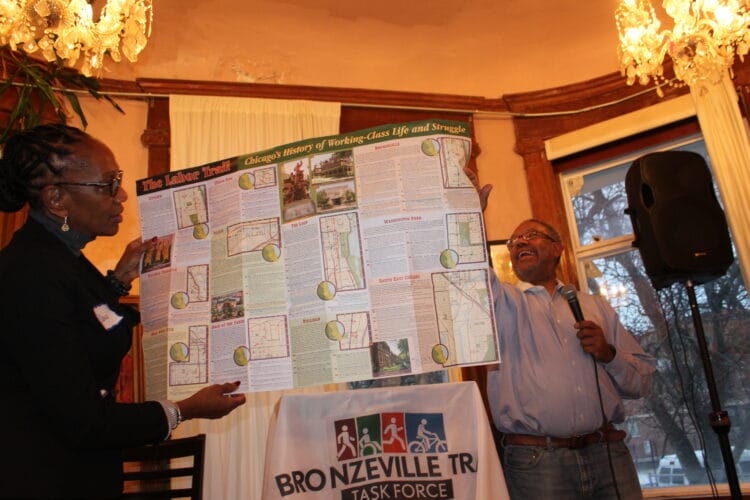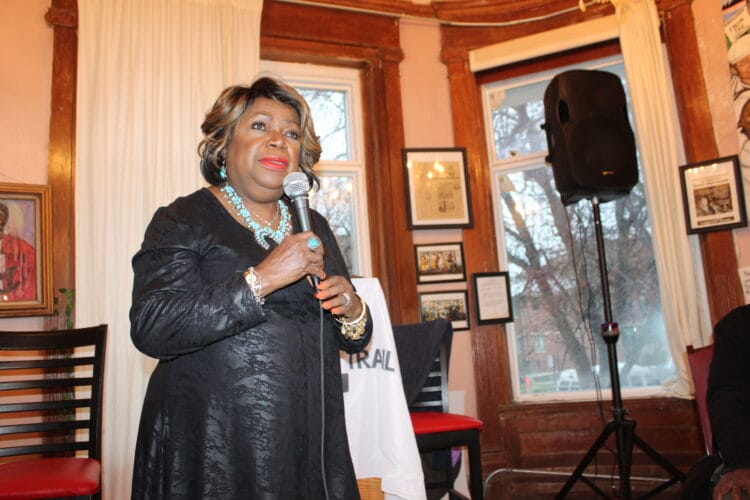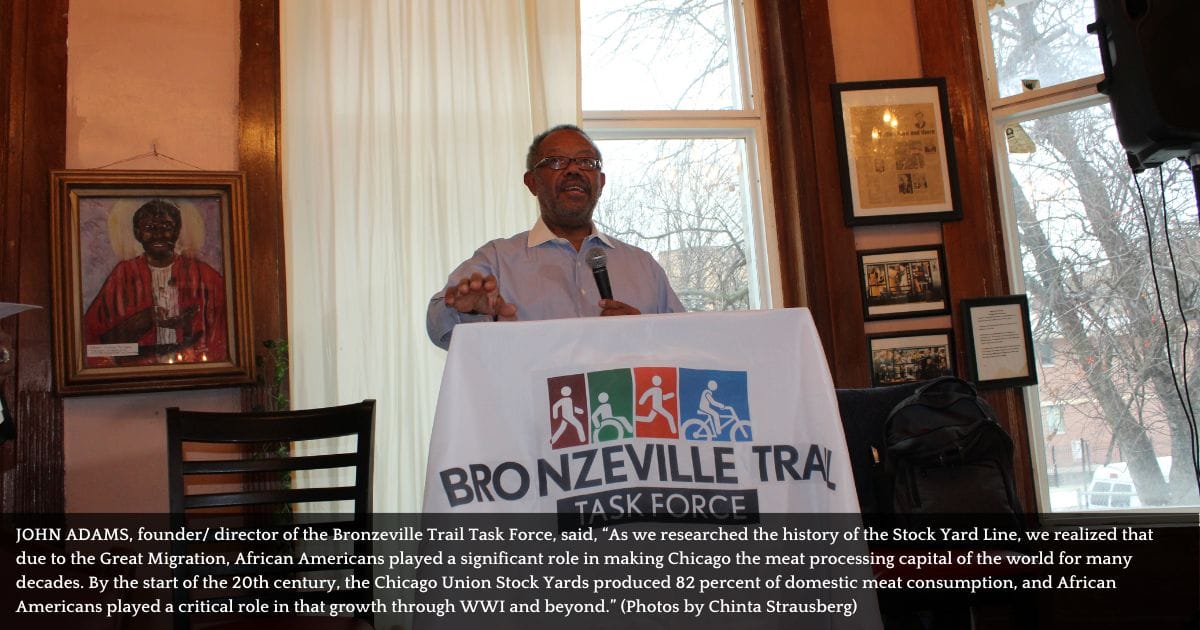Members of the Bronzeville Trail Task Force recently met at the historic Swift Mansion to begin the task of planning the rich history of that area, which includes the Chicago Union Stockyard becoming known as the “Butcher Capital of the World.”
The plan, hopefully to be funded with $100 million, will repurpose the abandoned Kenwood “L” embankment, develop new housing, create jobs and provide entrepreneurship opportunities for the community.
On Saturday, December 17, John E. Adams, CPA, founder and project director, headed the meeting at the 4500 S. Michigan Ave. residence. Plans were unveiled to showcase a holistic development plan that not only tells the story of Bronzeville and establishes a bike trail but produces generational wealth for the Black community.
“We learned this week that telling the history of the Bronzeville Trail is going to be critical for future funding,” Adams told the committee.
He said when they began the project, they had no idea what role the rail line’s history would play in future funding. He said the Englewood Trail received $20 million last August, and that the Task Force will work on getting federal funding for the linear park that would be named the Bronzeville Trail.

The two-mile walking, running and biking trail would be built between 40th Street and Dearborn to 41st Street and Lake Park, which is an abandoned Kenwood “L” line embankment and owned by the Cook County Land Bank.
The Task Force will also reach out to the state, city and county for funding for its secondary neighborhood development plan of creating jobs, affordable housing and businesses.
Explaining, Adams said, “We’ll need $60 million for the trail embankment, and we will need funding for recreational space along the Trail, much like the 606 Trail where parks were developed, even a dog park.”
He said they will need $100 million to complete the project. When completed, Adams said it will attract at least $1 billion in neighborhood investments.
Projecting it could be completed in five or six years, Adams said Bronzeville has many vacant lots, making the project “very challenging but ripe for development.”
He said one of the first steps is to develop a neighborhood plan. When asked about potential crime, Adams said there have been documented acts of crime along the 606 Trail, but his task force will create an expert security team to deal with that issue.
Joining Adams were Task Force Board members, urban planners, architectural researchers, historians and historical society representatives.
The Task Force, which initially unveiled its plans for a linear park in April of 2022, was endorsed by Mayor Lightfoot, Cook County Board President Toni Preckwinkle, Aldermen Pat Dowell (3rd), and Sophia King (4th) and other elected officials.
The Bronzeville Trail history project has six goals, according to Task Force co-chair Dr. Gloria McDaniel.
- To preserve and collect documents, photographs, and historical records, which highlight the importance of the Chicago Union Stockyard Line and the Kenwood Elevated Rail Line.
- To raise the visibility of African American workers’ presence and use of the Chicago Union Stockyard Line and Kenwood L to travel to the five major meatpacking companies in the Bridgeport (Packingtown) community.
- To create and disseminate scholarly research and educational outreach to benefit Bronzeville area schools and worldwide learners.
- To expand understanding of the role of the Union Stockyards in the era of the Civil War, the Great Migration and the Chicago 1919 Race Riots.
- To build a publicly accessible database of narratives, oral history and history of Bronzeville Task Force development.
- To conduct a detailed study of the relationship between African Americans and unionization in Chicago’s meatpacking industry.
Adams said the history of Chicago’s meatpacking industry is an important part of this project because African Americans who were part of the Great Migration came to Chicago with a skillset to slaughter livestock.

As workers in the stockyards, they had the skills to build communities, businesses, churches and other organizations. From workers in this industry grew political activists, educators and Civil Rights leaders, according to the Task Force.
Adams said, ”As we researched the history of the Stock Yard Line, we realized that due to the Great Migration, African Americans played a significant role in making Chicago the meat processing capital of the world for many decades.
“By the start of the 20th century, the Chicago Union Stock Yards produced 82 percent of domestic meat consumption, and African Americans played a critical role in that growth through WWI and beyond.”






